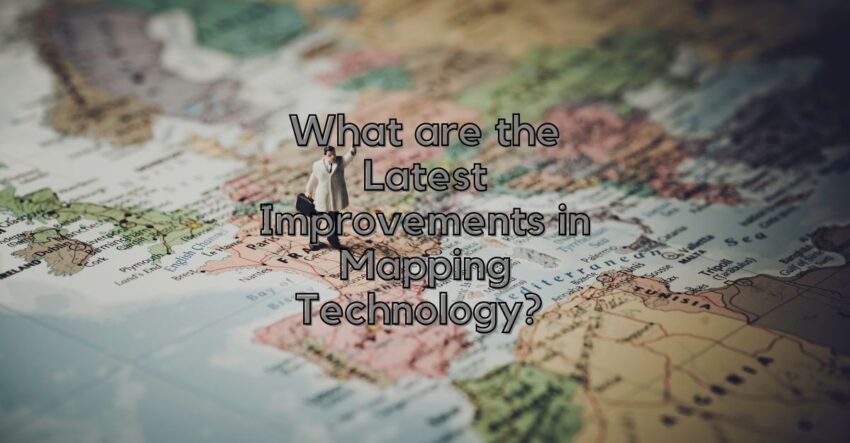In this article, we discuss what are the Latest Improvements in Mapping Technology. Mapping technology has advanced dramatically in recent years. With the advancement of satellite imaging and global positioning systems, mapping technology has become more accurate. And allowing users to easily locate their locations and plan trips.
Additionally, new mapping software and apps allow users to access up-to-date information about traffic and public transit routes. Thus giving users the ability to locate points of interest and plan the most efficient routes. Anyway, here we share the most valuable information about mapping technology, the latest techniques and improvements achieved to provide more reliable and accurate details about the world around us.
The latest improvements in mapping technology include high-definition mapping, augmented reality, indoor mapping, 3D mapping, and more. Let’s go into detail about these techniques.
High-Definition Mapping
High-definition mapping (HDM) is a technology which uses digital maps and 3D models to capture the physical features of an area in detailed, high-resolution visuals. This type of mapping offers a comprehensive view of an area, providing accurate and up-to-date information about roads, buildings, natural features and other physical elements. High-Definition mapping is often used in autonomous vehicle development and navigation. As well as in 3D city models and virtual reality simulations.
Augmented Reality Mapping
Augmented reality mapping is a technology that combines digital data, such as images, video, and 3D models, with real-world environments to create interactive, immersive experiences. It allows users to view, explore, and interact with their surroundings by overlaying digital information on top of the physical world. This technology is using on a variety of applications, from navigation and education to gaming and entertainment.
Indoor Mapping
Indoor mapping is a technology that uses sensors and 3D mapping to accurately map and navigate indoors. It uses a combination of GPS, RFID, and other sensors to provide detailed maps of indoor environments. This technology uses for wayfinding, asset tracking, and other location-based applications. It is being used for a variety of applications, such as retail stores, airports, stadiums, schools, and museums.
3D Mapping
3D mapping is a process of creating a three-dimensional representation of a specific object, area or surface. It involves scanning and collecting data points from an object or area, then using software to turn the data points into a 3D model. This type of mapping now uses in many different industries, including engineering, architecture, geology, and more.
High-Resolution Satellite Imagery Mapping
High-resolution satellite imagery mapping is the process of creating digital maps using imagery collected from satellites. This type of mapping uses in a variety of applications, including land-use planning, disaster response, urban planning, environmental monitoring, and military operations. High-resolution satellite imagery maps can provide detailed information about land cover, land use, topography, infrastructure, and other features. The resolution of the images is typically measured in meters, allowing for a high level of detail.
Conclusion
These are the latest improvements in mapping technology that has made navigating the globe easier than ever. Mapping technology has allowed us to explore the world in greater detail by providing real-time data and information about the places we visit. The future possibilities of mapping technology are limitless, and it is sure to have a positive impact on our lives for years to come.
Read more: Importance of Google Map in business.

